NOTE: For prior parts in the Hizballah Cavalcade series you can view an archive of it all here.
–
Ansar Allah al-Awfiyya: One of Many New Khomeinist Militias in Iraq
By Phillip Smyth

Figure 1: AAA’s logo. The symbol features the fist-gripping-a-Kalashnikov symbol, which is nearly ubiquitous among Iranian proxy groups.
On August 10, 2014, Ansar Allah al-Awfiyya (The Loyal Partisans of God or AAA), a Shia jihadi militia, announced its existence via Facebook and cast itself as a militia whose purpose is to assist in fighting Sunni Jihadi groups such as the Islamic State (IS, also known as ISIS or the Islamic State of Iraq and al-Sham) and the “Ba’athists” (likely a reference to the Naqshbandi Army or JRTN). Two weeks following its declarations of existence, the group had already reported its first losses.
The group has cast itself as supportive of the Iranian Supreme Leader and attempts to appeal to Iraq’s large Sadrist Movement (Al-Tayyar al-Sadri) by incorporating images of the late Ayatollah Muhammad Muhammad Sadiq Sadr.
Proxy Overlap

Figure 2: A “martyrdom” poster released for a Liwa al-Hamad militant killed in Syria. The poster was circulated by and featured the logo of KSAI’s media wing.
While new and relatively unheard of, AAA did not emerge from a void. As with other Iranian proxies, the group has listed itself as one of the many groups belonging to “al-Muqawama al-Islamiyyah fi al-Iraq” (“The Islamic Resistance in Iraq”). Yet, its “Muqawama” credentials are simply one piece to a larger interconnected Iranian proxy network.
Shaykh Haydar al-Gharawi, Secretary General of Kayan al-Sadiq w al-‘Atta fi al-Iraq (KSAI or The Group of Honesty and Caring in Iraq) announced AAA as a militia associated with his small Maysan Province based party. LSAI has been politically active since 2012 and has had members serve on Maysan’s provincial council. In June, one LSAI leader on Maysan’s provincial council declared the province would allocate billions of Iraqi dinars to assist with training for volunteer fighters.1
KSAI has also promoted its association with Akram Kaabi, the Secretary General of Liwa al-Hamad’s parent group, Harakat Hizballah al-Nujaba. Since HHN has sub-militia groups, such as Liwa Ammar Ibn Yasir and Liwa al-Imam al-Hasan al-Mujtaba, it appears that KSAI has the most extensive links with HHN’s Liwa al-Hamad. These associations were exposed via Facebook posts earlier in 2014 via the posting of “martyrdom” notices from the group about a member killed fighting as part of Liwa al-Hamad. Additionally, the same style of graphics used for Liwa al-Hamad’s online posts are replicated. Further demonstrating the deep links between Liwa al-Hamad and AAA, Liwa al-Hamad’s official Facebook pages have even adopted the logo of AAA.
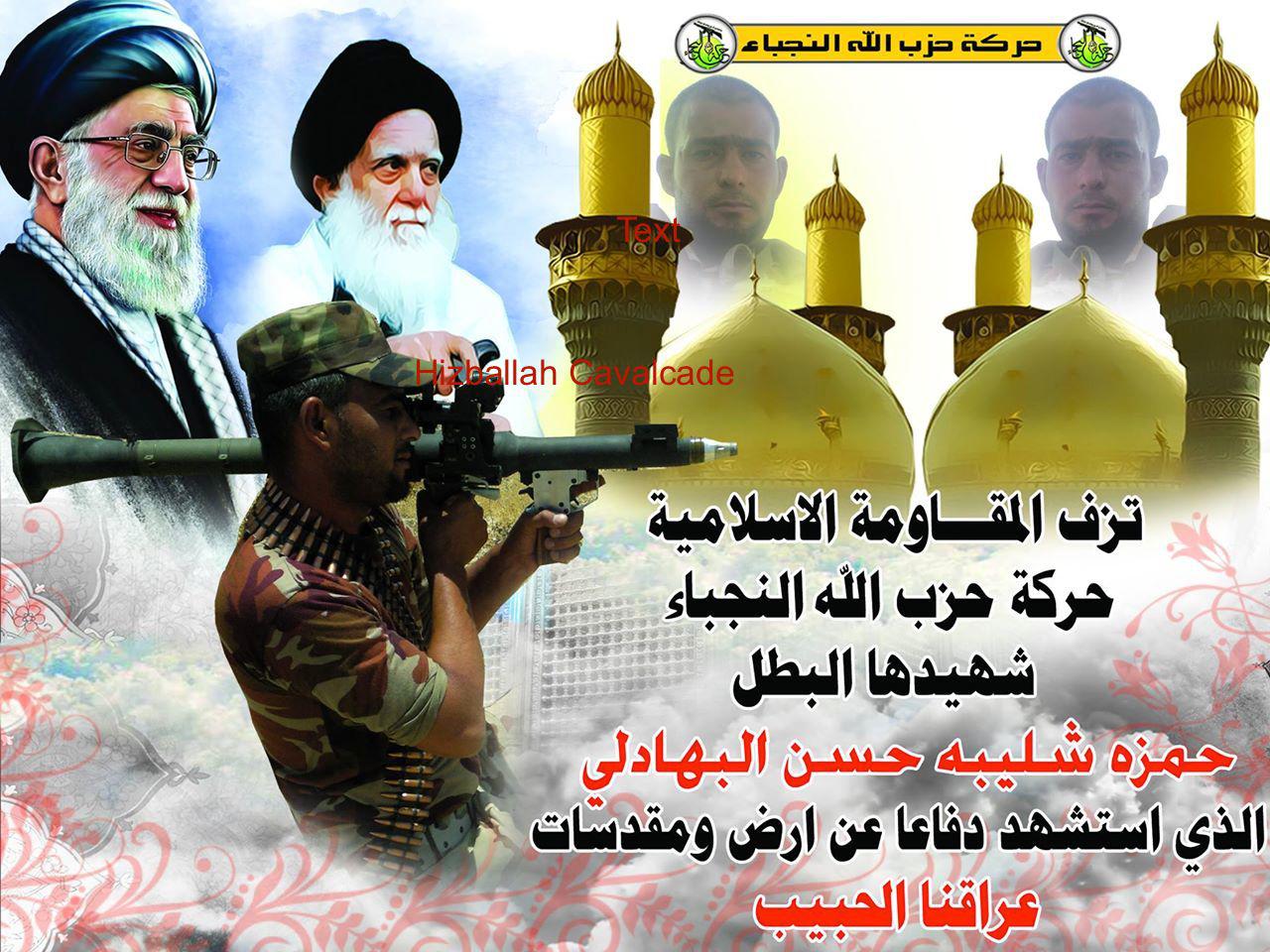
Figure 3: A “martyrdom” poster for a HHN member. The image is the same model used by AAA.
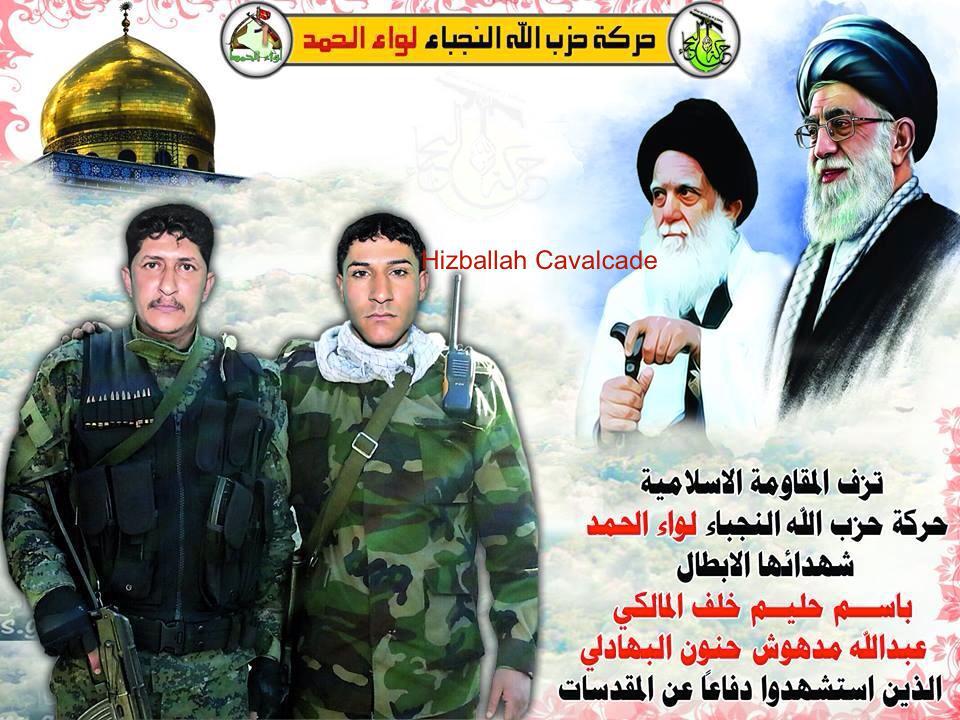
Figure 4: A “martyrdom” poster for Liwa al-Hamad. This model is the same as AAA’s “martyrdom” imagery.

Figure 5: Liwa al-Hamad’s official Facebook page has also adopted the AAA logo.
Ansar Allah al-Awfiyya has also claimed it is affiliated with Harakat Ansar Allah al-Awfiyya, (The Movement for the Loyal Partisans of God). It is unknown whether the group is attempting to market itself as a separate or unified movement with LSAI, or simply using the term “Harakat” (“Movement”) to appear larger and/or more developed. Nevertheless, the creation of multiple interlinked groups utilizing commanders who were members of other established organizations is a common strategy within the realm of Iran proxy militias.2
Ansar Allah al-Awfiyya Joins the Battle
AAA has not yet announced the areas of Iraq in which their armed forces are operating. However, other details have emerged. Shaykh Haydar al-Gharawi, the Secretary General of KSAI has now been simultaneously described as AAA’s Secretary General. From released images, the group appears to follow the same types of tactics utilized by other groups when they have gone about asserting their presence in the arena of Iraqi Shia militias. The group has pressed civilian vehicles into service and declared the deaths of two members, including a commander, Muhammad Abdul Amir Ibrahim al-Assadi.
It is likely AAA is organized along the lines of other Iranian proxies, with the militia borrowing fighters from other established organizations in order to appear more powerful and established. Nevertheless, since the group already has a strong regional influence, it is possible it can count on the regional populace it represents to assist with the recruitment of new fighters.

Figure 6: “Martyrdom” poster for an AAA member announced killed on August 31, 2014.
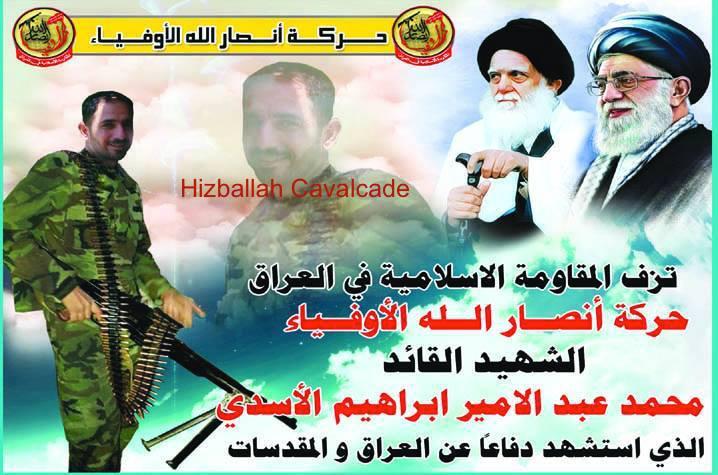
Figure 7: AAA commander Muhammad al-Assadi was declared killed while fighting in Iraq in a number of posts on August 24, 2014.
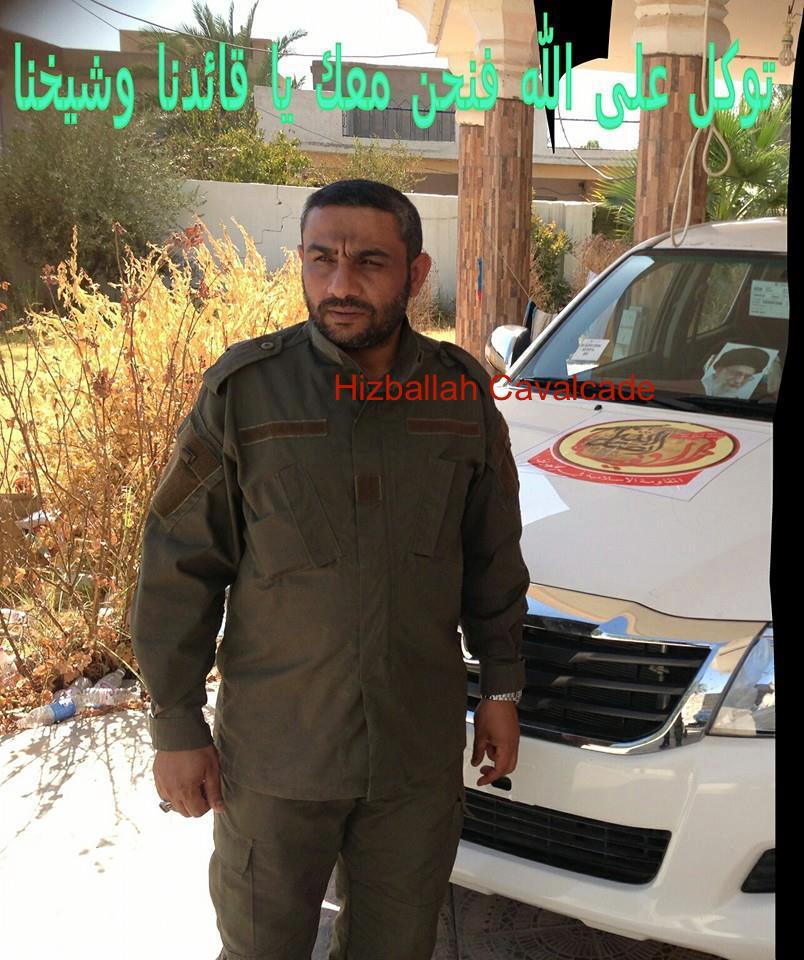
Figure 8: AAA’s secretary general, is shown in uniform posing in front of a car featuring the group’s logo and a poster of Iranian Supreme Leader Ayatollah Khamenei.
_____________
NOTES:
Category: Liwa’a al-Hamad
Hizballah Cavalcade: Khamenei’s Cannon: .50 Caliber Anti-Material Rifles & Shia Fighters in Syria
NOTE: For prior parts in the Hizballah Cavalcade series you can view an archive of it all here.
–
Khamenei’s Cannon: .50 Caliber Anti-Material Rifles & Shia Fighters in Syria
By Phillip Smyth
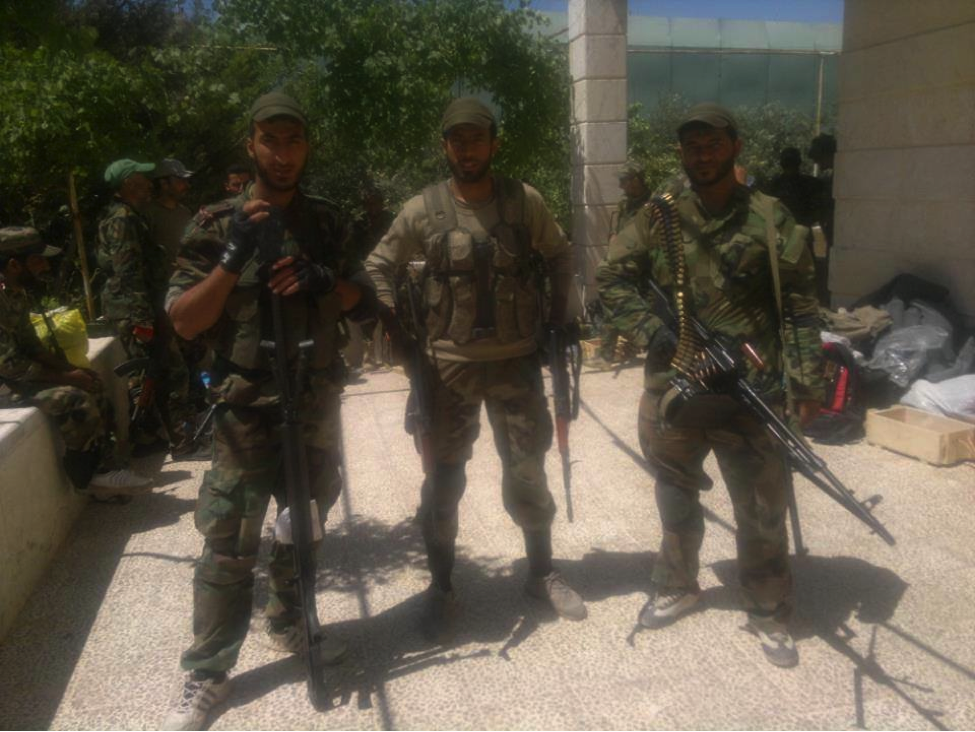
Figure 1: Combatants from Liwa’a ‘Ammar Ibn Yasir. The fighter on the left likely holds an Iranian-copy of the HS.50 rifle.
Since April 2013, around the same time Liwa’a Abu Fadl al-Abbas was first gaining broader exposure and name-recognition, another sub-trend started to appear in the photos showing Shia Islamist fighters in Syria. This trend remained minor and occasional. However, starting in October, there have been increasing examples of foreign Shia Islamist fighters being pictured with long range bolt-action anti-material rifles.[1]
It is possible these weapons were the bolt-action HS.50, .50 caliber (12.7x99mm) rifles produced by Austria’s Steyr Mannlicher. According to The Telegraph, 800 of the rifles were shipped to Iran in 2007.[2] However, according to the Brown Moses Blog, it is far more probable that these rifles are actually Iranian copies which were shipped to Syria.[3] Since the winter of 2012, pro-Iranian social media has also praised the Iranian-made copy of the rifle.[4] Still, serial numbers on the weapons are often hidden, making absolute confirmation difficult.
The original Steyr Mannlicher sale of these long-range weapons caused worries among British and U.S. policymakers and military personnel due to the fear they would be supplied to Iranian-created and supplied Shi’a Islamist “special groups” in Iraq. These groups included Asa’ib Ahl al-Haq and Kata’ib Hizballah. Both of these organizations are now sending forces to Syria.
Anti-material sniper rifles of this caliber have found a welcome place in Western military services. The U.S. military fields the M107 semi-automatic .50 caliber rifle as do a number of other militaries. In October, 2012 one of these weapons killed a Taliban member in Afghanistan from a distance of 2,475 meters.[5]
Presently in Syria, these types of rifles have been used by both rebels and pro-Assad forces. Nevertheless, the outfitting of highly organized foreign Shia fighter manned organizations may demonstrate a shift in tactics and training.
Groups using the rifle in Syria span the full spectrum of organizations backed by Iran. Lebanese Hizballah has been a primary poster of images with the weapon. Additionally, Iraq-based Harakat Hizballah al-Nujaba’s (a front for Kata’ib Hizballah and Asa’ib Ahl al-Haq) Syria-based front militias, Liwa’a ‘Ammar Ibn Yasir and Liwa’a al-Hamad have posted photos of their militants with the rifle. Iraq’s Badr Organization’s Quwet Shahid Muhammed Baqir Sadr and Kata’ib Sayyid al-Shuhada have posted their own images of their fighters with the HS.50 type rifle. Other Shia fighters from unnamed organizations have also been pictured with the weapon.
Films featuring Shia militia groups using the HS. 50 type rifles in combat in Syria have been extremely rare. Usually only photos are posted.
The first film showing Shia Islamist militias in Syria using the rifle was posted to Facebook and YouTube pages associated with the Badr Organization’s Quwet Shahid Baqir Sadr (BOQSBS), the group’s expeditionary unit in Syria. The BOQSBS has also been a main poster of high-quality images showing their combatants wielding these types of anti-material rifles. Around a minute of footage showing BOQSBS fighters using the weapon was inserted into a much longer film made to demonstrate the group’s activities in Syria (see below at minute markers 1:59-2:23).
Due to the high level of operational security employed by these groups, potential failures or successes of the rifle in combat are often not showcased. Operations using the rifle have also not been detailed on the many social media pages run by Iranian-backed Shia militia groups inside Syria. In fact, the rifle has rarely been named or described by Shia Islamist militia pages. Nevertheless, these rifles have become a regular feature in images featuring fallen fighters.
Such a capability, even if deliberately showcased for propaganda purposes, should be taken seriously by regional and global military forces. Iranian equipped and trained snipers, utilizing smaller caliber rifles, demonstrated a lethal efficiency during the Iraq War (2003). Their utilization of smaller caliber-wielding snipers (particularly using the SVD-type rifles) demonstrates a concentration on sniping tactics.
Some Possible Reasons Why the Rifles Are Appearing More
- Propaganda Purposes: Some of the photos of fighters holding the rifle appear to be posed images meant to showcase the size of the weapon (representing power) in comparison to the fighter. Additionally, since it is probably a copy, showing the rifle in operations overseas is a sign that Iranian-made weapons are of a high quality. Proxy organizations may also see the rifle as a symbol of advancement and as a sign they are comparable to first-world armies. The weapon may also be a sign to rebel groups that Shia militants have more advanced capabilities.
- General Incorporation into the Order of Battle: The rifle could have possibly become more prolific with increased foreign-manned Shia militia operations.
- Offensive Operations: Since the start of main offensives in October and increase in numbers of Shia fighters, it is possible the rifle has found more use and acceptance by fighters.
The Rifle & Its Shia Islamist Users
Lebanese Hizballah:
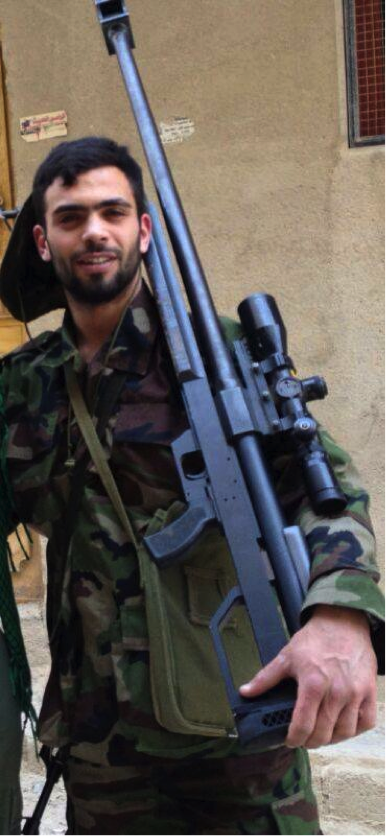
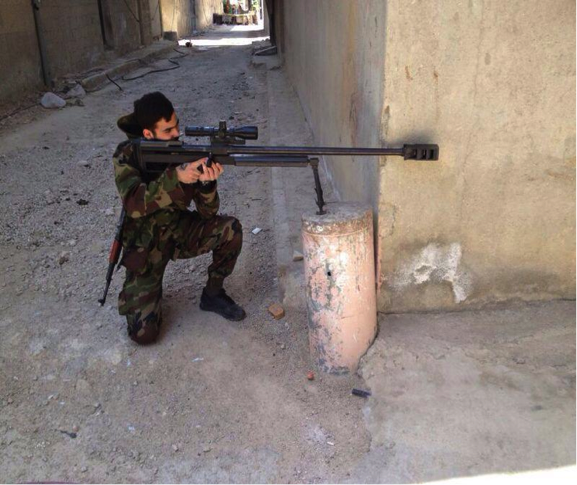
Figure 2: Lebanese Hizballah’s Ali al-Hadi Nuwn shown holding the weapon on his shoulder. (Left)
Figure 3: Another posed-photo of Lebanese Hizballah’s Ali al-Hadi Nuwn. In this picture he is taking aim with the .50 caliber rifle. (Right)
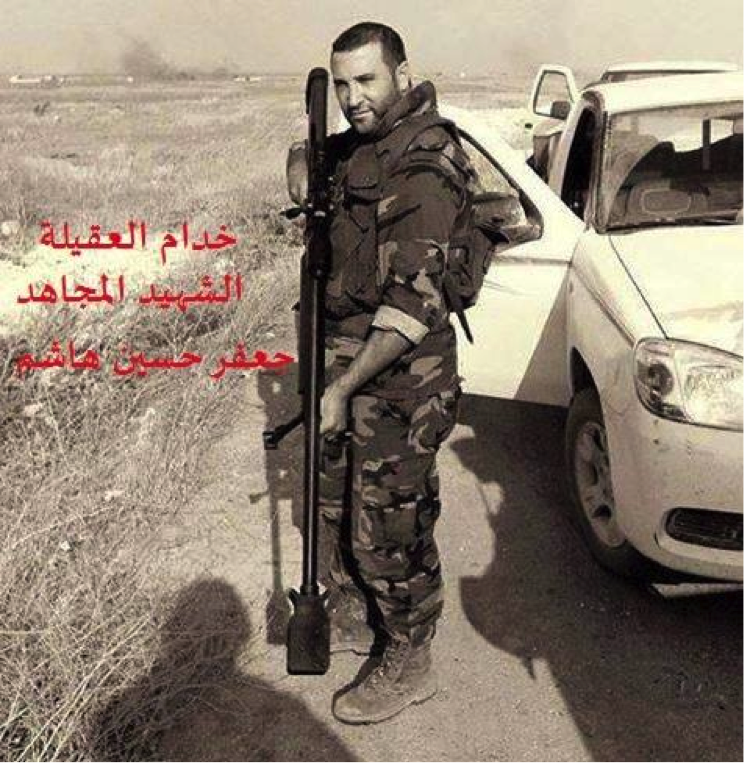
Figure 4: Hizballah commander Ja’afar Husayn Hashim with the rifle. He was reported to have been killed in Syria on November 1, 2013.
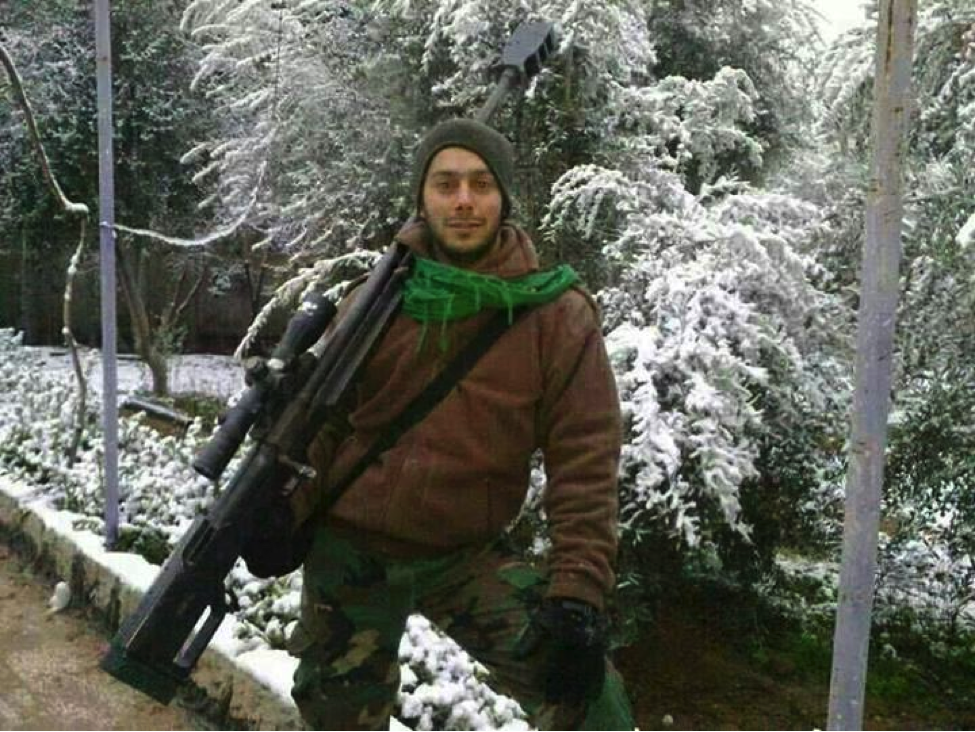
Figure 5: Hizballah’s Khadr Ahmed Matar, declared killed in Syria on December 2
0, is shown standing in the snow with the rifle.

Figure 6: Qasim Ghamloush is shown holding the .50 caliber rifle. His death was announced by Hizballah on December 7, 2013.
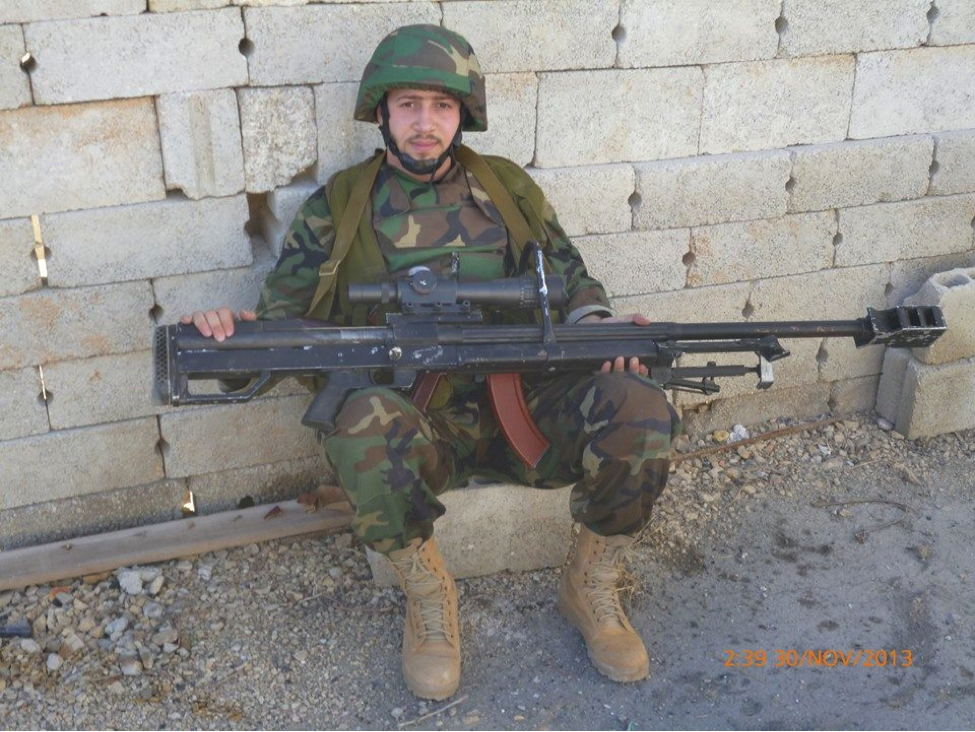
Figure 7: Ali Husayn Salah (A.K.A. Sheikh Hadi) is seen holding the rifle over his Kalashnikov-pattern weapon. Salah was also reported to have been killed in Syria on December 7, 2013.
Liwa’a al-Hamad:
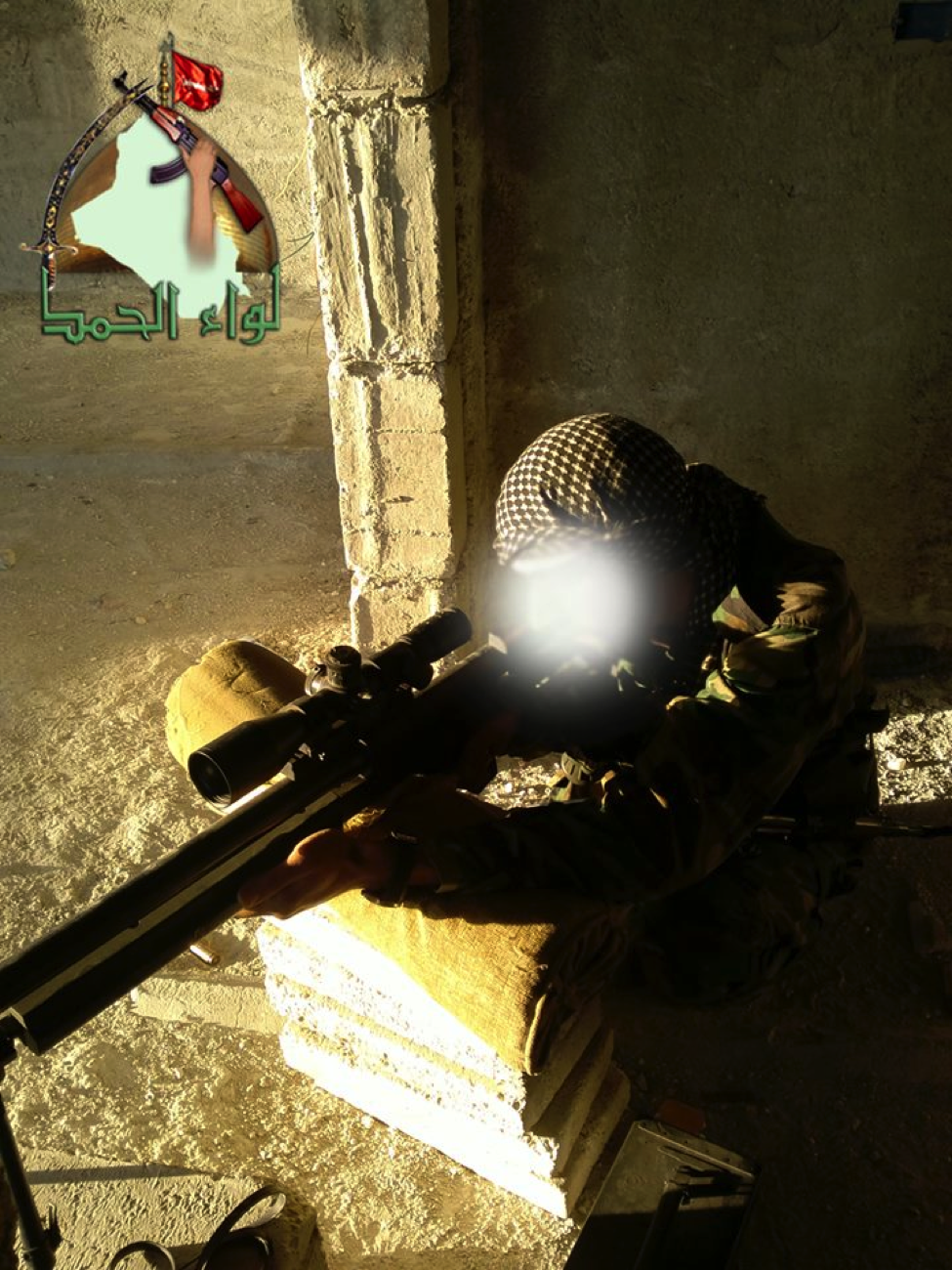
Figure 8: An October photo of a fighter from Liwa’a al-Hamad taking aim with the HS.50-type rifle.
The Badr Organization – Quwet al-Shahid Muhammed Baqir Sadr

Figure 9: Following the announcement that the Badr Organization had created its own expeditionary force for Syria, this was one of the first photos they posted online.
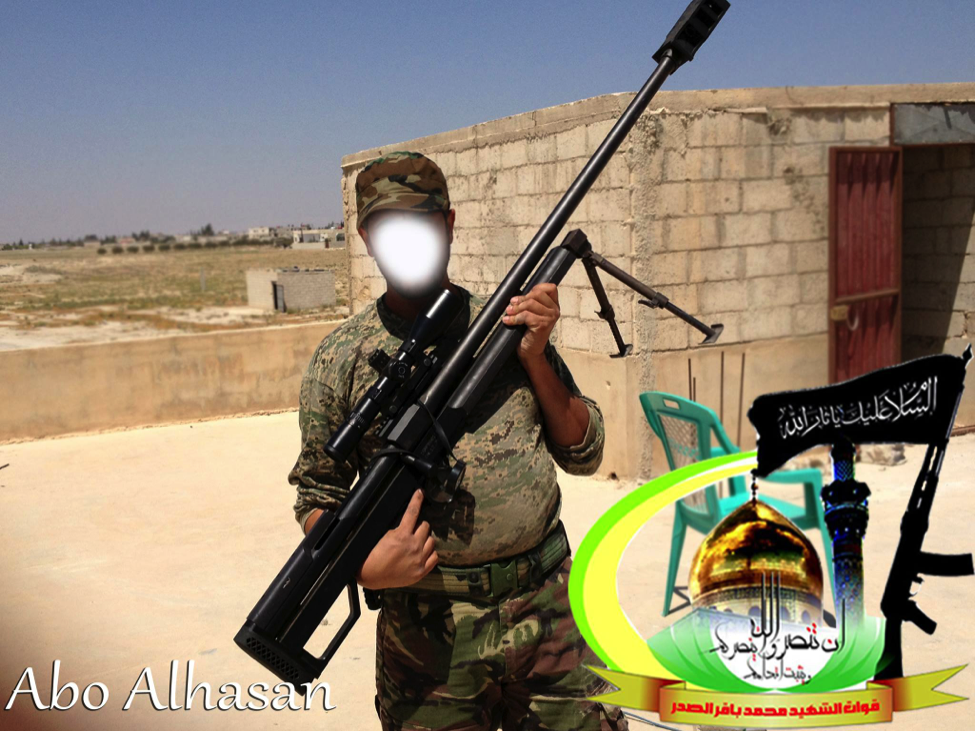
Figure 10: A Badr Organization-Quwet al-Shahid Muhammed Baqir al-Sadr is shown holding the HS. 50 type rifle.
Liwa’a ‘Ammar Ibn Yasir:
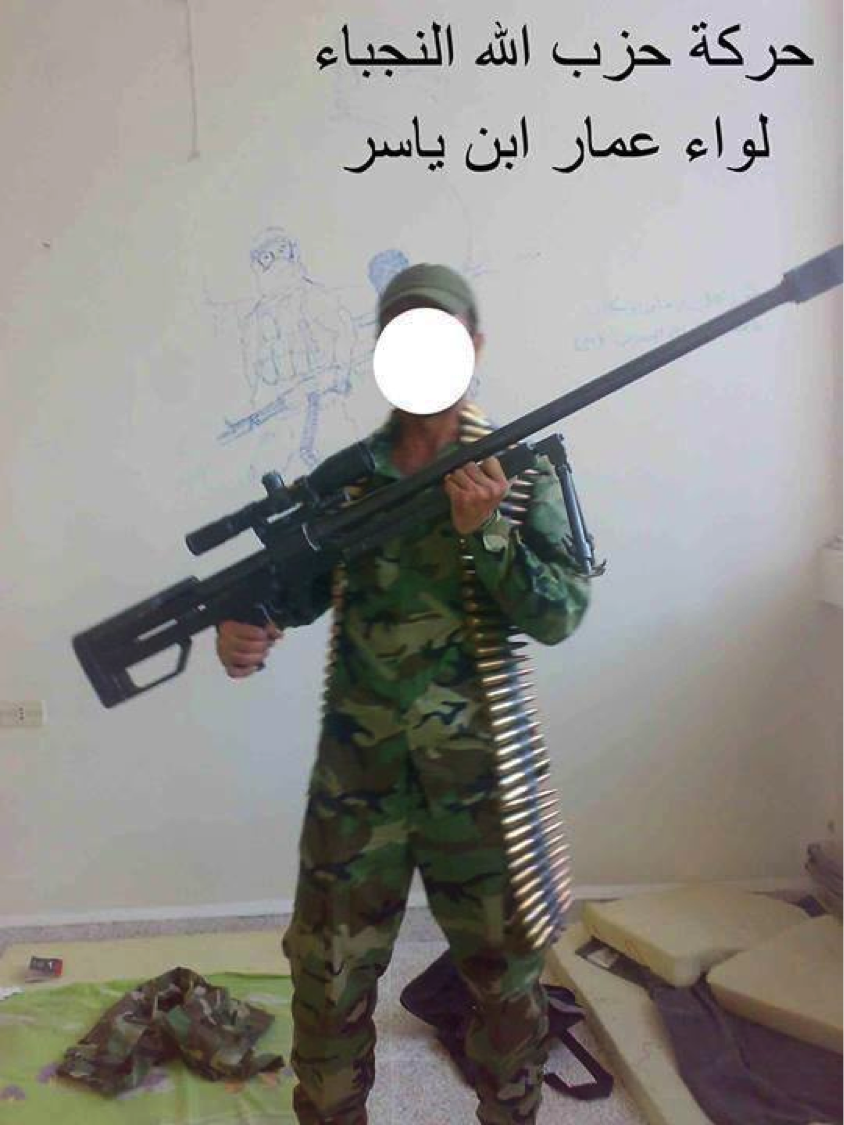

Figure 11: A commander from Liwa’a Ammar Ibn Yasir is seen holding the .50 caliber rifle.
Kata’ib Sayyid al-Shuhada:
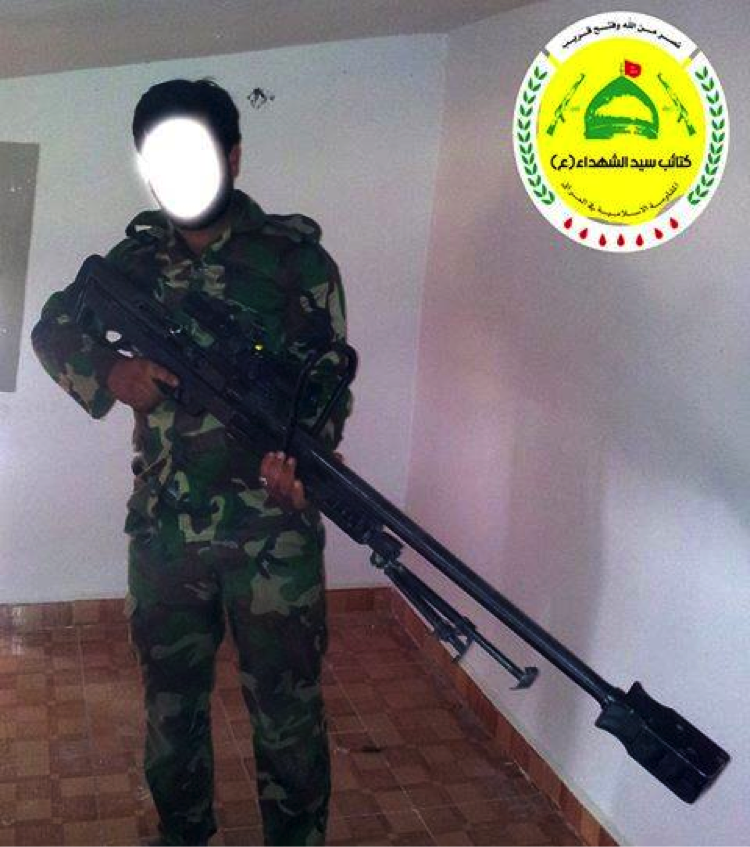
Fighters from Other Groups:
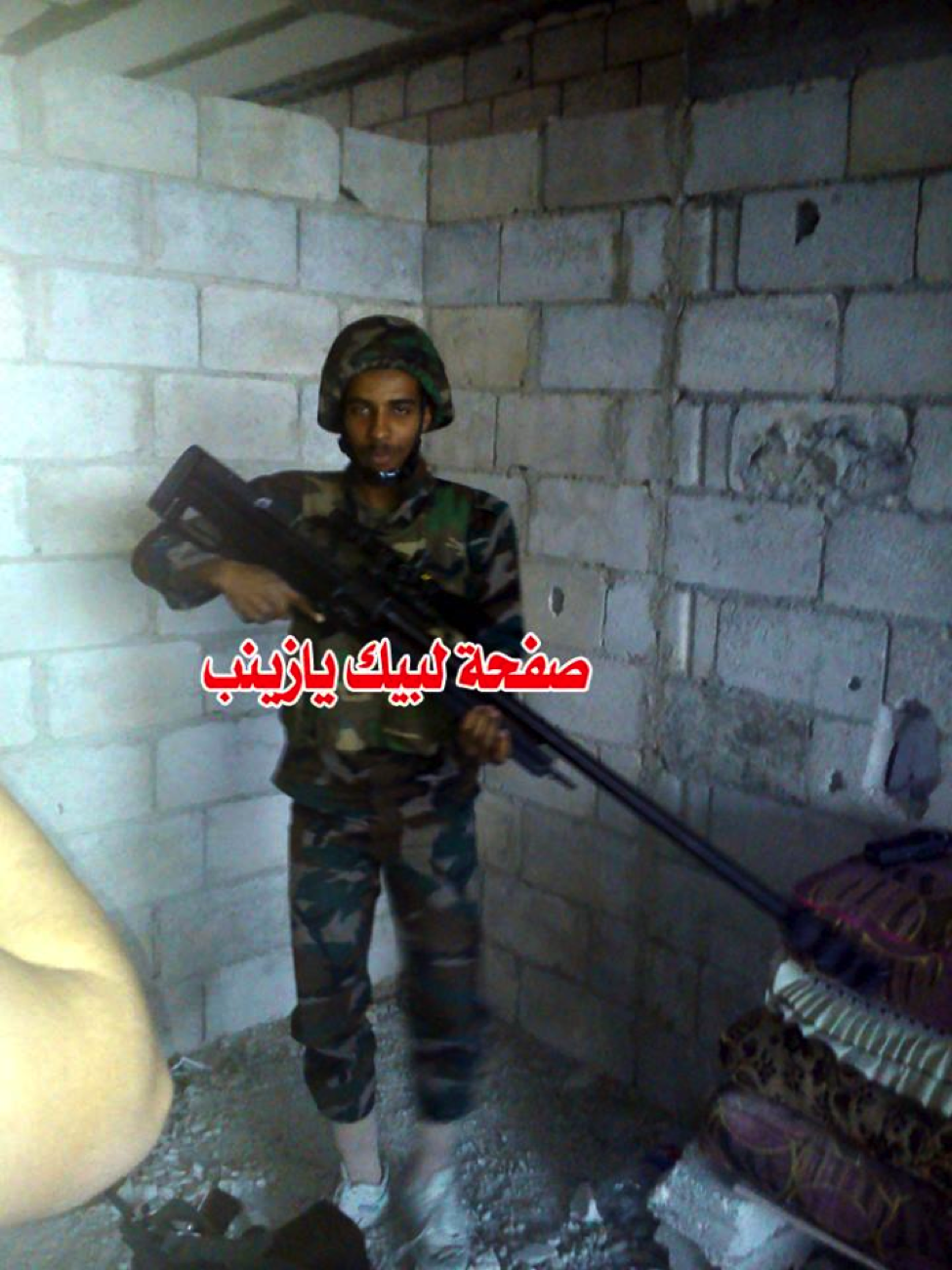
Figure 12: The Shia militia effort’s “first African martyr” (Muhammed Suleiman al-Kuwni) is shown holding the rifle.
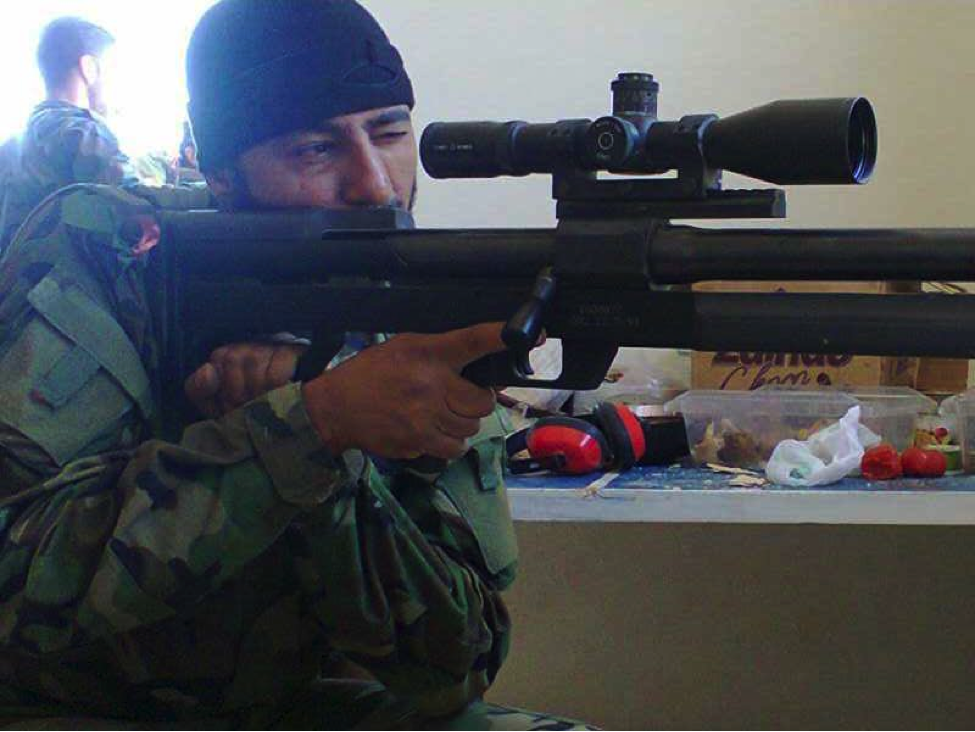
Figure 13: A fighter from an unnamed Shia Islamist militia (likely Liwa’a ‘Ammar Ibn Yasir) take aim with his rifle.
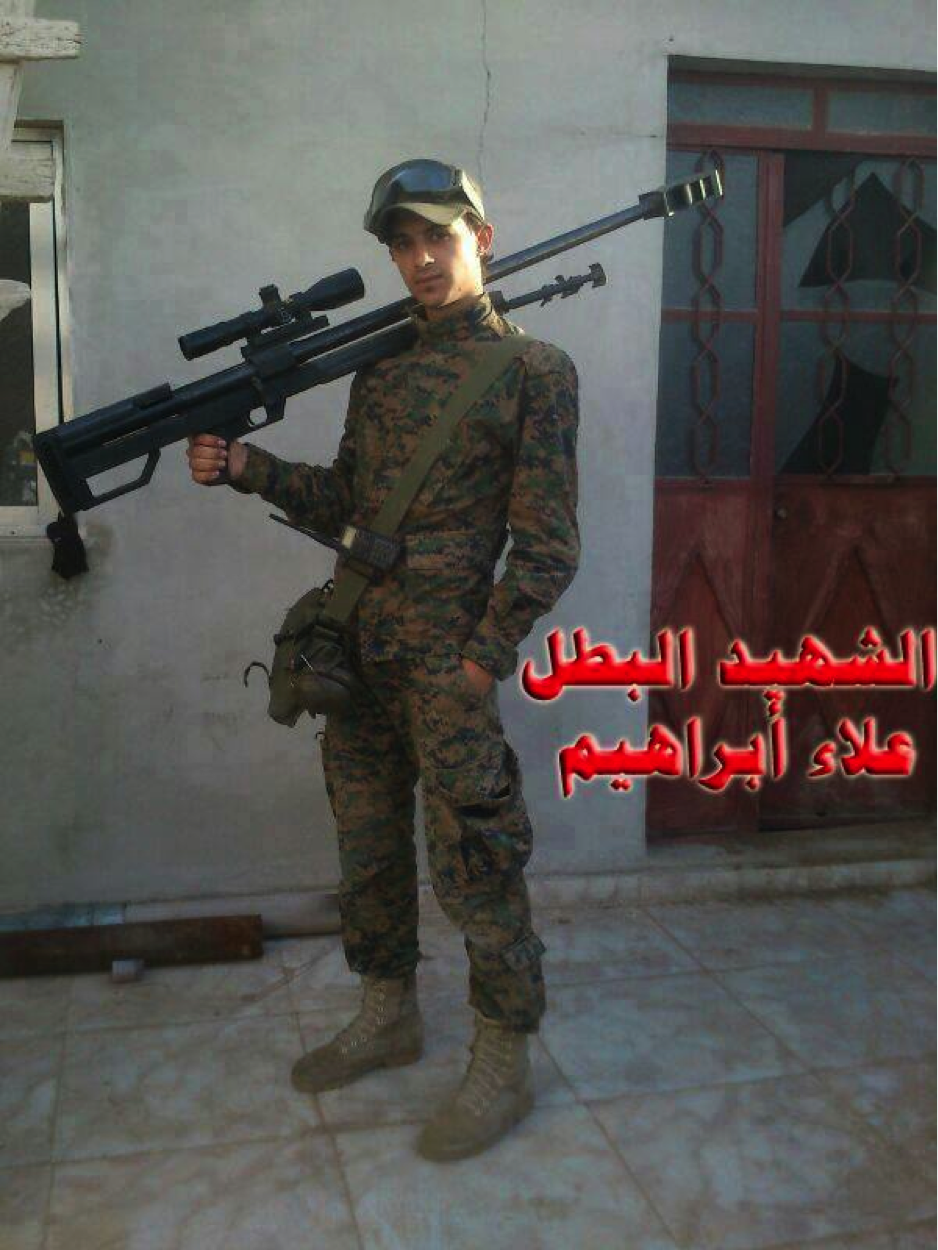
Figure 14: Alla’ Ibrahim (possibly from Liwa’a Zulfiqar), an Iraqi Shi’a fighter buried on November 30, 2013 holds the rifle over his shoulder.
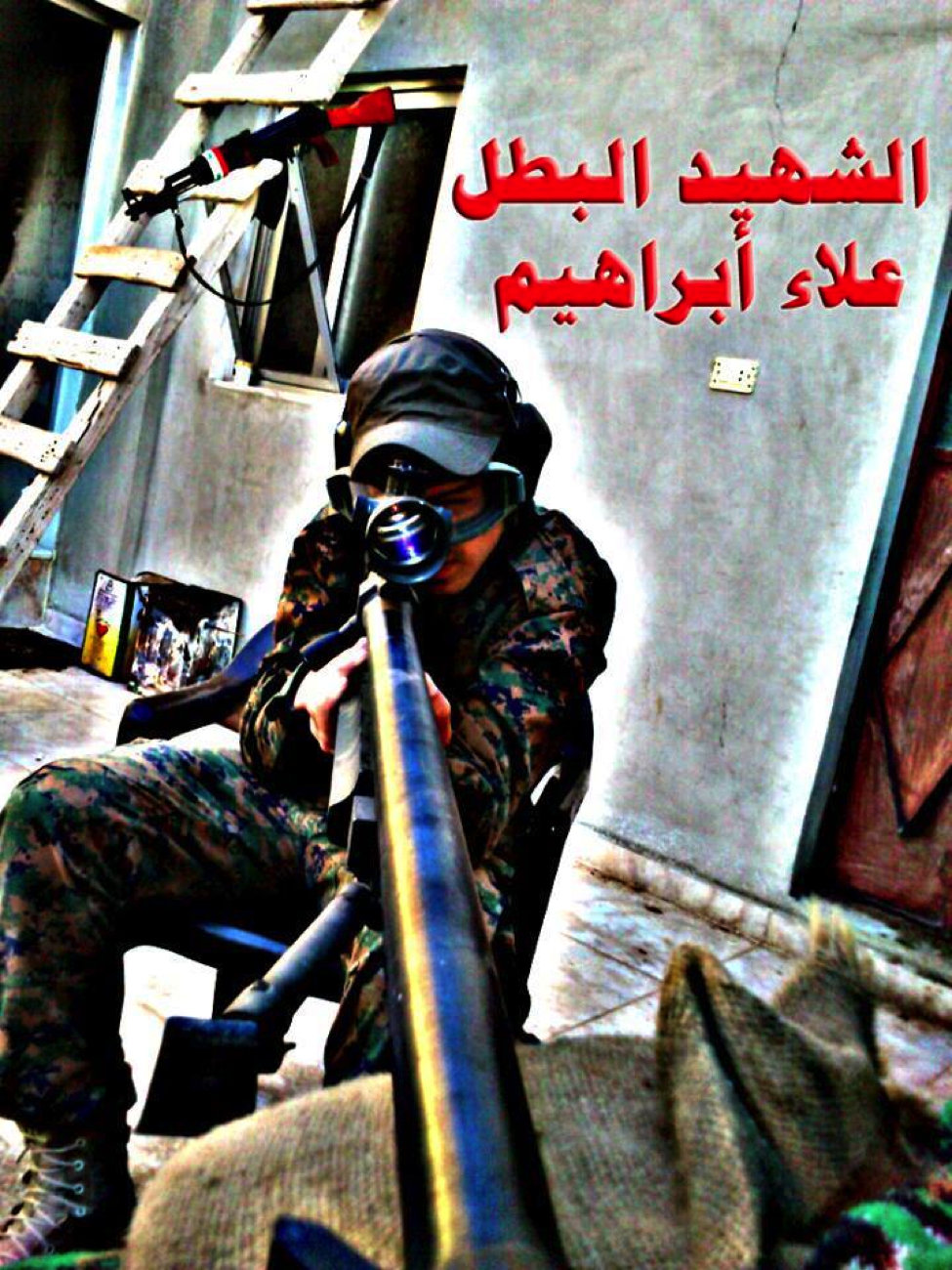
Figure 15: An edited shot of Alla’ Ibrahim shows him posting with the rifle.
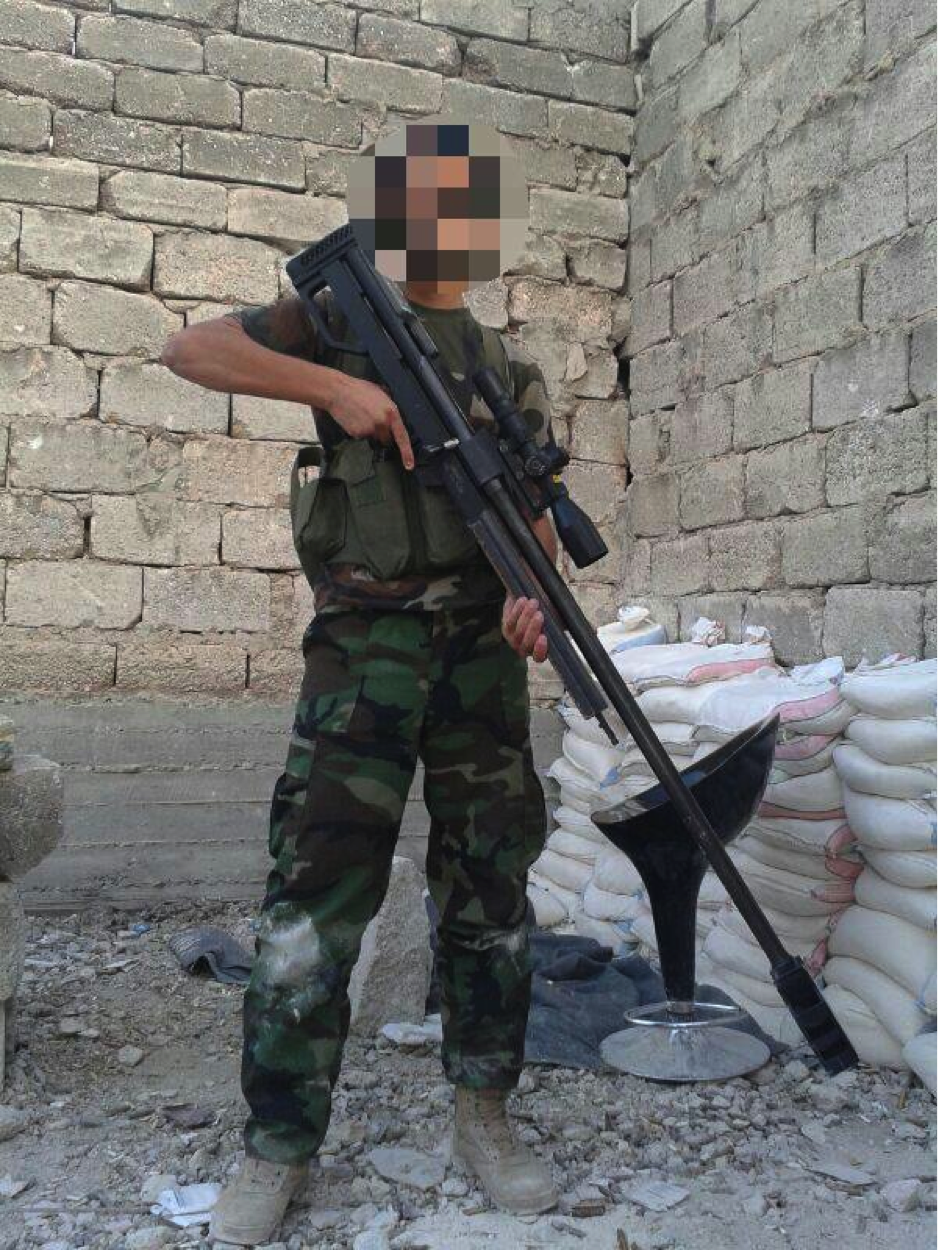
Figure 16: A Shia fighter from an unnamed militia group is shown with the HS. 50-type rifle.
[1] The Oryx Blog has an excellent post on HS. 50-type rifles in Syria: https://spioenkop.blogspot.com/2013/04/syria-and-her-hs50s.html. The post is from April 27, 2013 and pictures of Liwa’a Abu Fadl al-Abbas members with the rifle.
[2] See: https://www.telegraph.co.uk/news/worldnews/1542559/Iraqi-insurgents-using-Austrian-rifles-from-Iran.html
[3] See: https://brown-moses.blogspot.com/2013/04/anti-material-rifles-in-syria.html. See also: https://www.thefirearmblog.com/blog/2012/07/16/mysterious-iranian-50-cals-part-3/. This post by The Firearms Blog should also be read when assessing the rifle in question.
[4] See: https://www.facebook.com/permalink.php?story_fbid=477563188953409&id=174927625878471.
[5] See: https://www.dailytelegraph.com.au/news/opinion/taliban-remain-in-fear-of-lethal-strikes-writes-chris-masters/story-e6frezz0-1226504862496
Hizballah Cavalcade: Liwa’a al-Hamad: Harakat al-Nujaba’s Latest Shia Militia in Syria
NOTE: For prior parts in the Hizballah Cavalcade series you can view an archive of it all here.
–
Liwa’a al-Hamad: Harakat al-Nujaba’s Latest Shia Militia in Syria
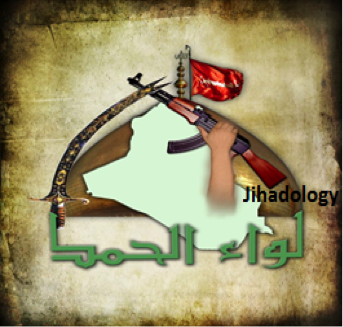
Figure 1: Liwa’a al-Hamad’s official logo. The logo features a map of Iraq with an arm extended and holding a Kalashnikov-type rifle. The dome of the Sayyida Zaynab shrine topped by a red flag reading, “Ya Husayn” (“O Husayn”). The logo resembles the type of logo utilized by Liwa’a al-Hamad parent organizations such as Asa’ib Ahl al-Haq, Kata’ib Hizballah, and Harakat Hizballah al-Nujaba (see Figure 3).

Figure 2: A screen capture of Liwa’a al-Hamad’s flag. The flag is yellow with a printing of the golden dome and blue minaret of the Sayyida Zaynab shrine. The name of the organization is on the left.
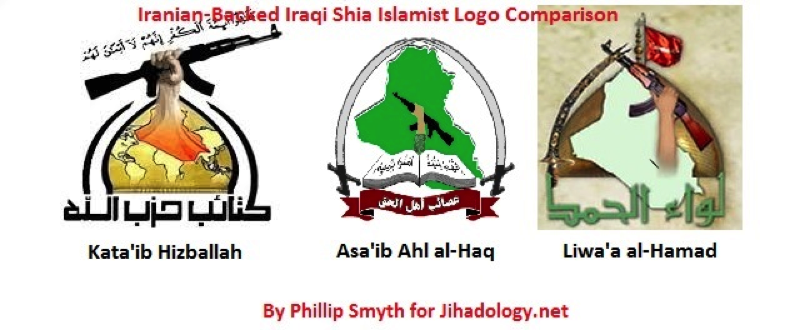
Figure 3: The outstretched arm gripping a Kalashnikov pattern rifle, crossed swords (or the extension of letters to appear like swords), and map of Iraq have become hallmarks of many Iranian-backed Iraqi Shia Islamist organizations.
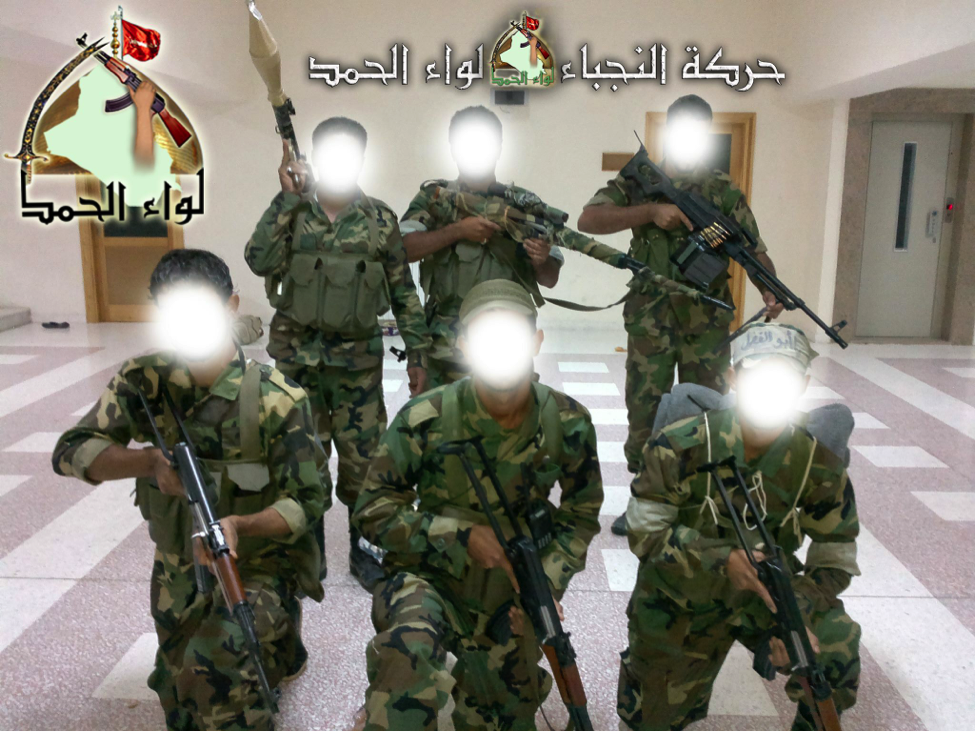
Figure 4: Liwa’a al-Hamad fighters pose for the camera. October, 2013.
Liwa’a al-Hamad’s Shadowy Origins
Harakat Hizballah al-Nujaba (The Movement for the Party of God the Outstanding. A.K.A. Harakat al-Nujaba), a front group created by Kata’ib Hizballah and Asa’ib Ahl al-Haq to route fighters to Syria, has created another Syria-based militia. In August, Harakat al-Nujaba threatened U.S. interests if Syria was attacked by U.S. forces and has been a leading Iranian proxy front-organization used in the war against Syria’s rebels.[1] The front’s newest Syria-based organization goes by the name of Liwa’a al-Hamad (The Praise Brigade). Nevertheless, little information about Liwa’a al-Hamad has been available via open source material.
This is not the first front militia created by Harakat al-Nujaba for activities in Syria. In fact, their main fighting organization in Syria is named Liwa’a ‘Ammar Ibn Yasir.[2] This group is quite active and is currently operating in Aleppo and Damascus in cooperation with Lebanese Hizballah and Liwa’a Zulfiqar. Additionally, Harakat al-Nujaba has also created Liwa’a al-Imam al-Hasan al-Mujtaba, a group which has been active in Rif Dimashq, particularly the East Ghouta area. Nonetheless, unlike its sister groups, Liwa’a al-Hamad is just starting to be given a more public profile. Relatively little has been released about the organization, its fighters, leadership, and/or areas of operation in Syria. Thus far, Liwa’a al-Hamad has not created its own accessible social media pages (particularly on Facebook or YouTube). Its broader exposure to the public only came in late November via official pages run by Harakat al-Nujaba’s Liwa’a ‘Ammar Ibn Yasir.
Liwa’a al-Hamad’s existence was first announced in a caption on a YouTube video from July, 2013. The video showed a funeral procession for dead members of Liwa’a ‘Ammar Ibn Yasir. However, no photos of its fighters or operations were posted online, nor were any Liwa’a al-Hamad members or symbols shown in the July video. The group was very rarely mentioned on other Shia Islamist militia social media pages. Only at the end of October were specialized images for the group posted on well-hidden social media sites. Interestingly, (at the time of this writing) none of these photographs were re-released on the interconnected web of Shia militia Facebook pages.

Figure 5: A larger grouping of Liwa’a al-Hamad fighters.
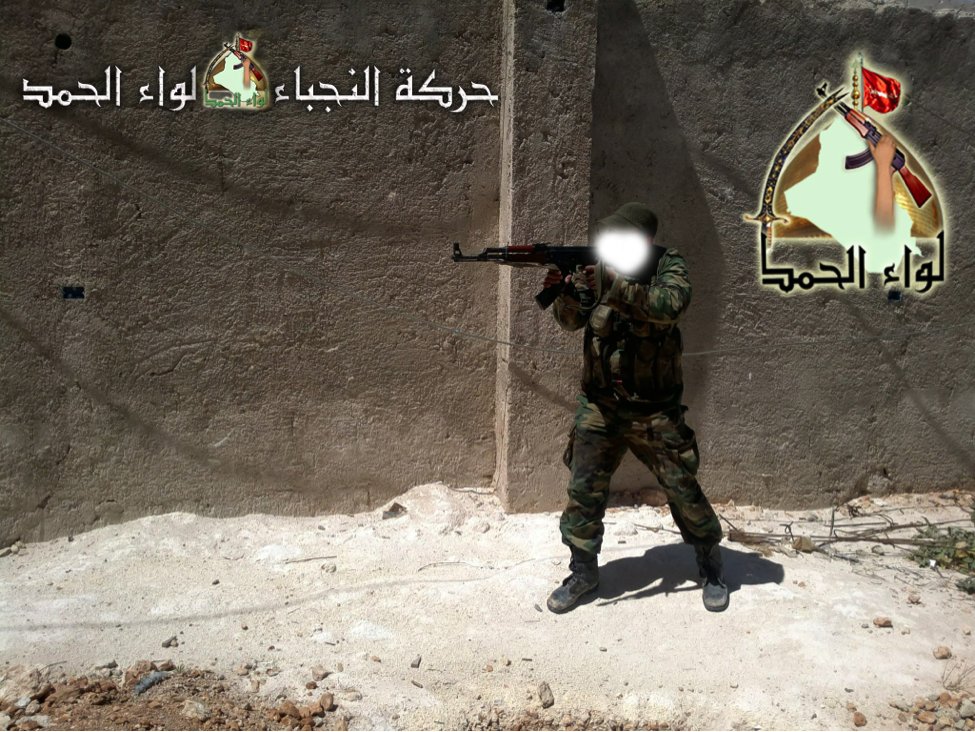
Figure 6: A Liwa’a al-Hamad combatant takes aim.
The Martyrs of Liwa’a al-Hamad
Ali Husayn was first announced as having been killed on the official Facebook page for Liwa’a ‘Ammar Ibn Yasir. This marked the first occasion where a fallen member of the organization was openly announced on an established Shia militia social media page. His death was reported on December 5, 2013 with one photo showing him clutching a machine gun. This has been the only photo from Liwa’a al-Hamad to have made its rounds on more established and prominent Shia militia pages. Interestingly, no patches or other forms of identification can be seen on his uniform. While many Shia Islamist fighters in Syria don patches featuring slogans such as “Labayk ya Zaynab” (“We are here for you, O Zaynab”), Husayn and other Liwa’a al-Hamad fighters often lack these accoutrements. Though, there were other fighters who were quietly announced on hidden social media applications as having been members of Liwa’a al-Hamad.
___
Name: Haji Abbas
Death Announced: December 7, 2013
Notes: Only one photograph could be found for Abbas. He was also claimed as a member of Liwa’a ‘Ammar Ibn Yasir.
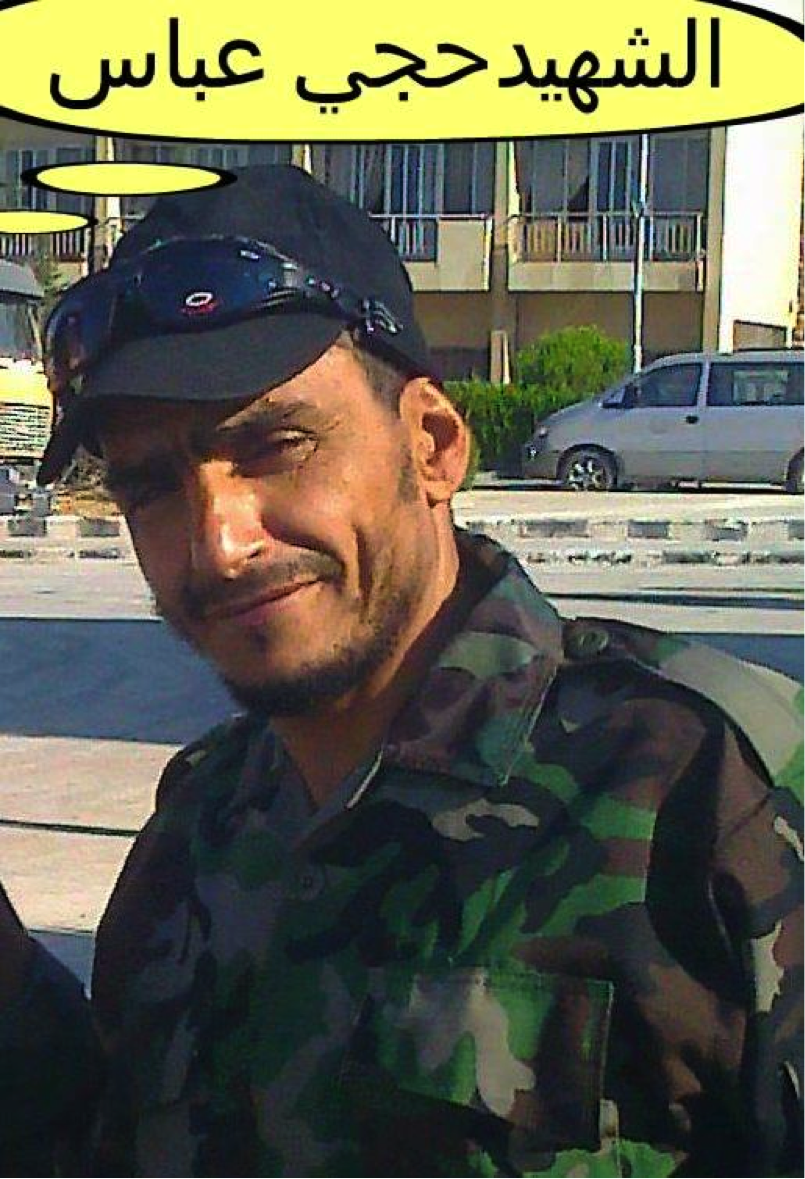
Name: Ali Husayn
Death Announced: December 5, 2013
Notes: Husayn had the most developed profile for a fallen fighter. While no details were released on his place of death, rank within the organization, or origins (though, his funeral was held in Iraq), he had multiple martyrdom photos made to commemorate him and a number of combat photos.
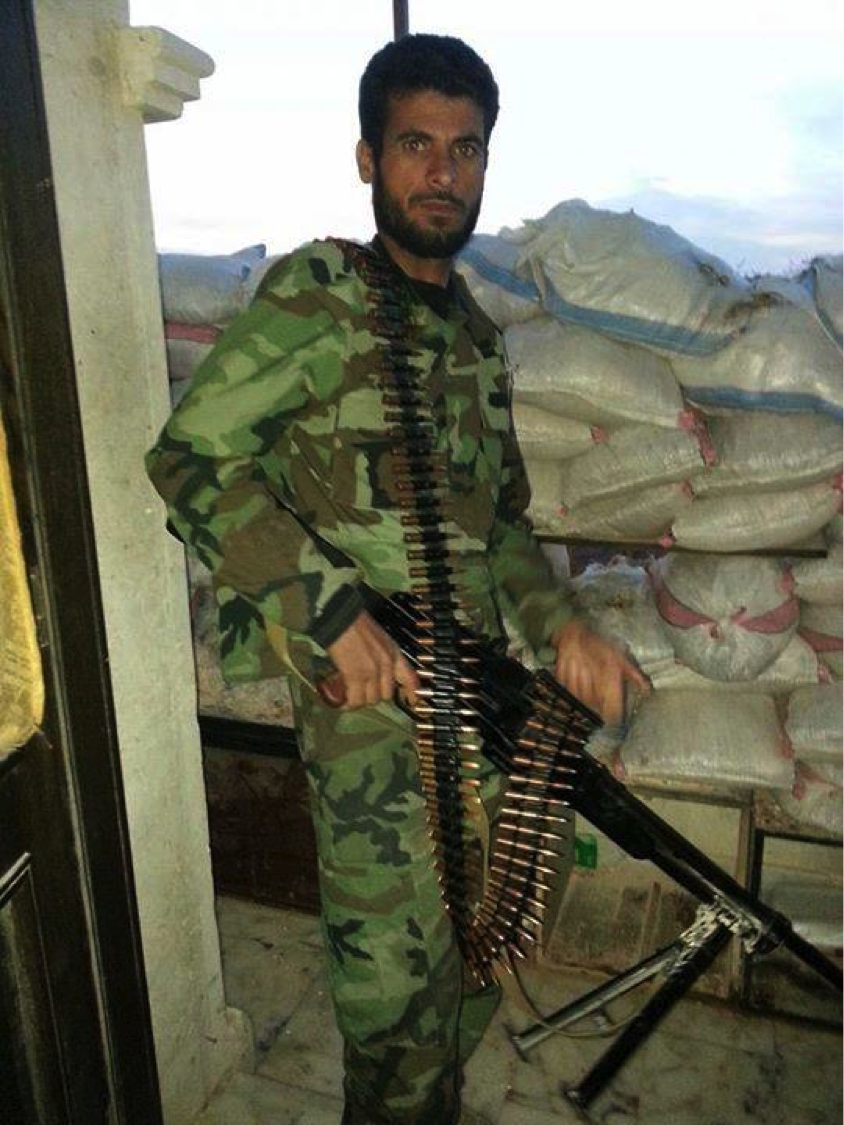
Figure 7: Liwa’a al-Hamad’s Ali Husayn posing with a PKM machine gun.
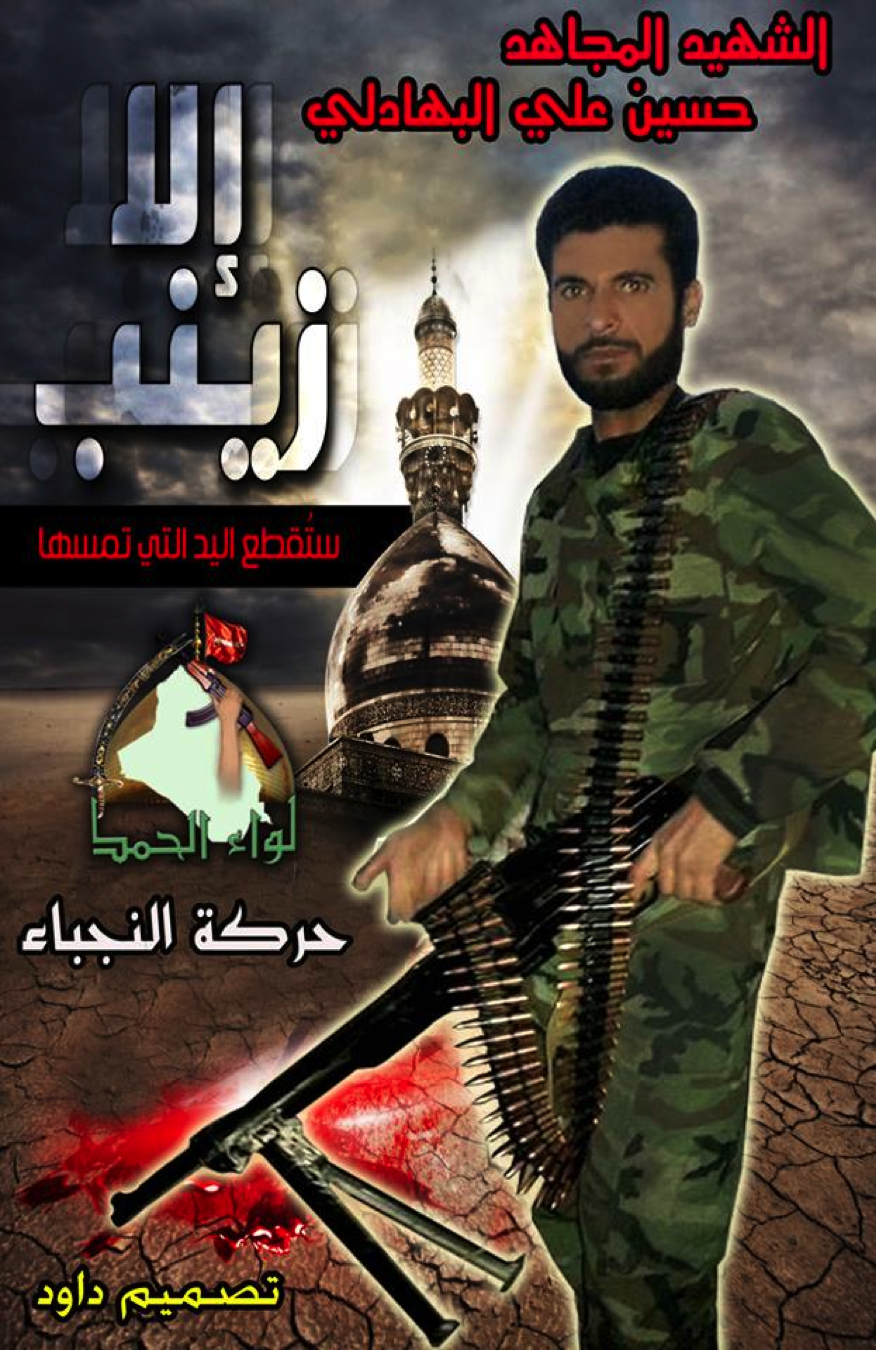

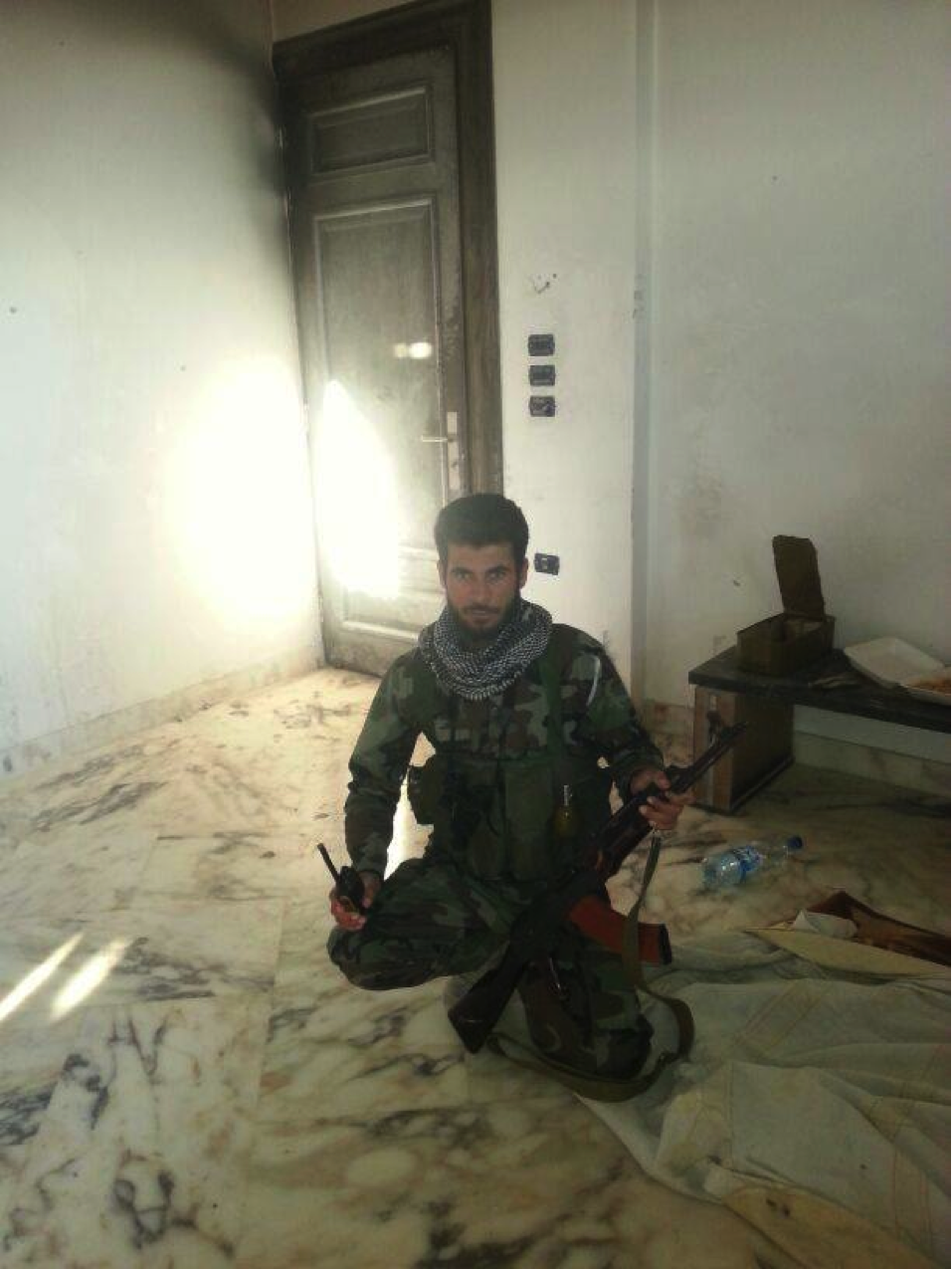
Name: ‘Ali Jiyad
Death Announced: November 30, 2013
Notes: No details were available on where he was killed. His posters match the design used by Liwa’a al-Imam al-Hasan al-Mujtaba and Liwa’a ‘Ammar Ibn Yasir.
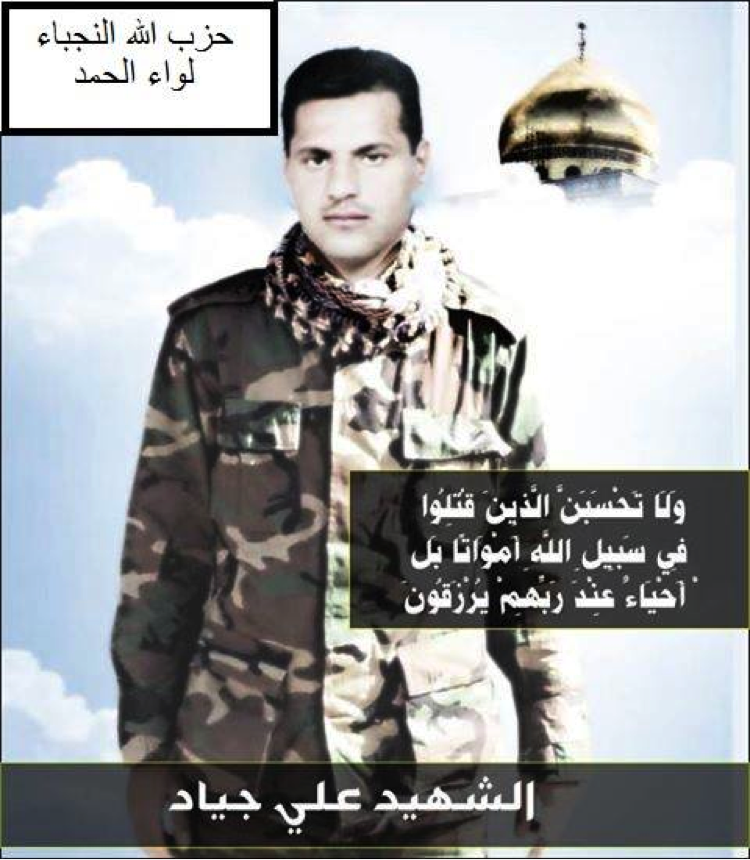
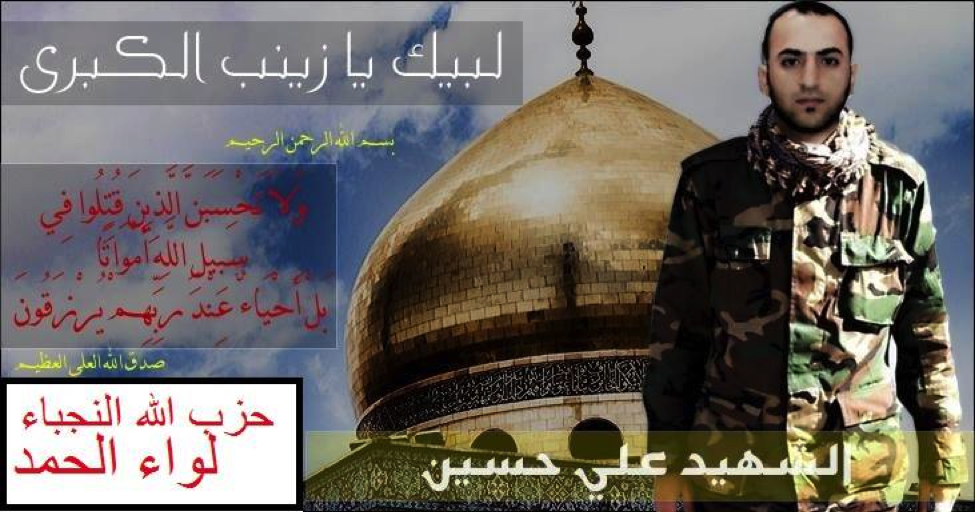
Videos
*** WARNING: GRAPHIC MATERIAL ***
Footage of the group has been hard to find. However, Liwa’a ‘Ammar Ibn Yasir uploaded a short video showing Liwa’a al-Hamad’s members at the funeral for one of their fallen members, Haji ‘Abbas. So far, this has been the only video that has been posted openly as footage showing Liwa’a al-Hamad.
Still, another video was released in mid-October showing “the soldiers of Allah” (a commonly used euphemism for Shia militiamen by their supporters) touring a site strewn with dead bodies. The recording’s own editing suggests the fighters were associated with Asa’ib Ahl al Haq, one of Liwa’a al-Hamad’s parent organizations. The film is particularly brutal and graphic in content. It features Shia Islamist fighters stepping on mangled bodies and numerous bloody corpses.
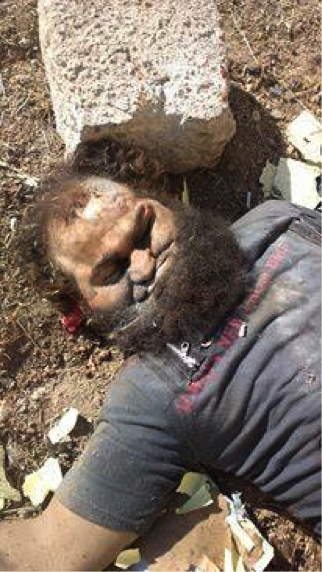
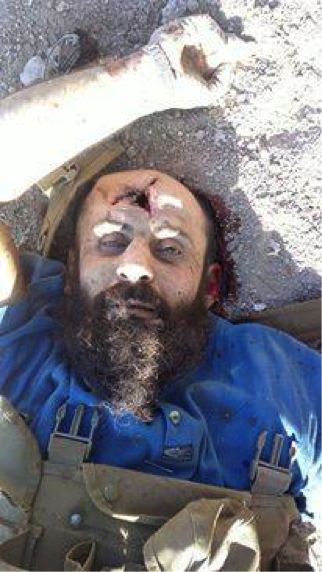
Figure 8: This dead rebel fighter (left) was featured in the film. This photograph was posted on a social media site affiliated with Liwa’a al-Hamad (see the film at 2:07). These photos were not found elsewhere on other social media or forum sites. [1] See: “Iraqi militia vows to attack U.S. interests if Syria hit”, Reuters, August 30, 2013, https://www.reuters.com/article/2013/08/30/us-syria-crisis-iraq-idUSBRE97T0XH20130830. [2] The Hizballah Cavalcade report on the militia also included the first analysis done on its Harakat Hizballah al-Nujaba parent group.
